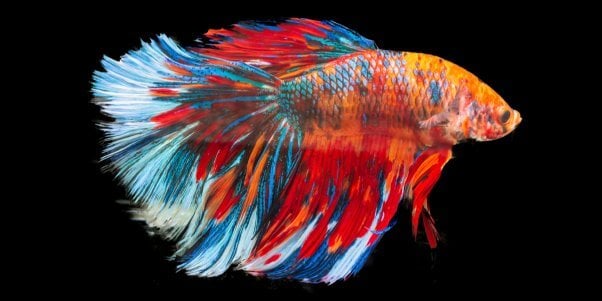How to Reproduce Betta Fish Effectively: Expert Strategies and Insights for Hobbyists Seeking To Expand Their Betta Collection
Reproducing Betta fish calls for a nuanced understanding of genetics and environmental conditions, making it crucial for hobbyists to approach the process with both persistance and treatment. Creating an ideal reproduction setting, picking the right pairs, and observing the ins and outs of their courtship actions are fundamental actions that can significantly affect the result.
Recognizing Betta Fish Genes
Recognizing the genes of Betta fish is critical for effective breeding, as it influences characteristics such as color, fin form, and actions. Betta fish display a diverse array of shades and patterns, greatly figured out by their genetic makeup.
Along with pigmentation, fin morphology is an additional considerable element of Betta genes (betta fish). The shape and size of fins are affected by different genes, including those that establish whether the fins are short, long, or veil-shaped. Comprehending these genetic variants helps dog breeders predict the phenotypic outcomes of their offspring
Additionally, behavior traits such as aggression and territoriality can likewise be affected by genetics. These actions play a vital function in the reproducing process, as they can affect generating success and the overall temperament of the resulting fry. By adequately comprehending these hereditary principles, breeders can make educated decisions, inevitably enhancing their reproduction programs and accomplishing preferable results.
Preparing the Reproduction Environment
Producing an optimum reproduction environment is crucial for the effective recreation of Betta fish. The first step in preparing this setting is to pick a suitable reproduction container, preferably ranging from 5 to 10 gallons.
Next, think about using a sponge filter or an air rock to give mild water circulation without producing strong currents that can worry the fish. It is necessary to install plants or breeding cones to provide concealing places and advertise convenience for the lady during the spawning process. Floating plants, such as Java moss or water sprite, can also produce a much more natural surroundings while facilitating bubble nest building by the male.
Before introducing the breeding pairs, ensure the water is conditioned and totally free from damaging chemicals, such as chlorine or heavy metals. betta fish. Routine water modifications ought to be carried out to preserve ideal water high quality, improving the chances of successful breeding. With these prep work in position, the reproducing setting will certainly support the health and wellness and well-being of both Betta fish
Selecting Breeding Pairs
Picking the appropriate reproduction sets is important for accomplishing successful Betta fish reproduction. When picking your reproduction pairs, consider several vital variables consisting of health and wellness, temperament, and genes. Healthy and balanced Betta fish display vibrant shades, clear eyes, and energetic habits. Selecting fish that are cost-free from condition makes sure a far better opportunity of producing viable spawn.
Personality is one more vital factor to consider, as Betta fish are known for their hostile nature. It is recommended to pick a male and lady that display suitable characters to minimize stress and anxiety during the reproducing process. A tranquil man can encourage a smoother courtship, while a woman that is also hostile may disrupt the procedure.
Hereditary history likewise plays a substantial function in the top quality of the children. Reproducing fish that are genetically diverse can minimize the threat of hereditary wellness issues and improve the total vigor of the fry. It is helpful to research the lineage of both the man and female, concentrating on preferable traits such as fin type, color scheme, and dimension.
The Breeding Process
The reproduction procedure of Betta fish requires careful preparation and focus to information to guarantee an effective end result. It is vital to prepare an appropriate reproduction container, preferably a 5-10 gallon fish tank with a temperature maintained at 78-80 ° F. The tank must be outfitted with a heating system, filter (preferably sponge type to avoid strong currents), and lots of water plants for the woman to conceal.
When the setting is established, introduce the picked breeding pair to the storage important source tank, enabling them to acclimate. Observe their behavior; the male will display elaborate courtship rituals, including flaring his fins and building a bubble nest. If the female shows passion, she will certainly present upright red stripes suggesting readiness for spawning.
When the woman is receptive, the pair will participate in a breeding welcome, during which the male fertilizes the eggs. It is vital to monitor their interactions closely, as the male might come to be hostile. After spawning, remove the have a peek here lady to stop possible damage. The male will often tend to the eggs, which commonly hatch out within 24-36 hours. Preserving optimal water conditions throughout this period is important for the development of healthy and balanced Betta fry.
Caring for Betta Fry

Feeding Betta fry is important, as they call for a diet high in protein. They can be fed infusoria or fluid fry food, transitioning to carefully smashed premium pellets as they grow. Feed little parts numerous times a day to urge healthy and balanced growth without overloading the storage tank with uneaten food.

As they mature, check their growth very closely and separate any kind of aggressive people to stop harm. By supplying a nurturing atmosphere and proper nourishment, hobbyists can effectively raise Betta fry right into vibrant, healthy and balanced fish, ultimately improving their reproduction ventures.
Conclusion
Successful Betta fish reproduction requires careful focus to genetic option, environmental conditions, and look after the fry. By recognizing the genes more information of Betta fish and preparing a proper breeding setting, enthusiasts can improve the possibilities of generating vibrant, healthy and balanced spawn. Selecting compatible reproduction sets and closely keeping an eye on the courtship and spawning procedures are vital. Finally, offering ideal treatment for the fry ensures their healthy and balanced growth, contributing to a successful Betta collection.